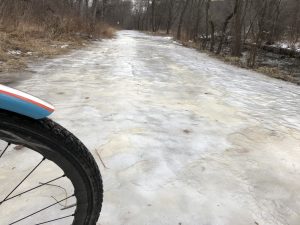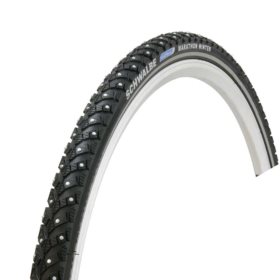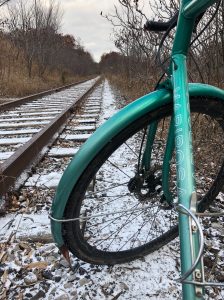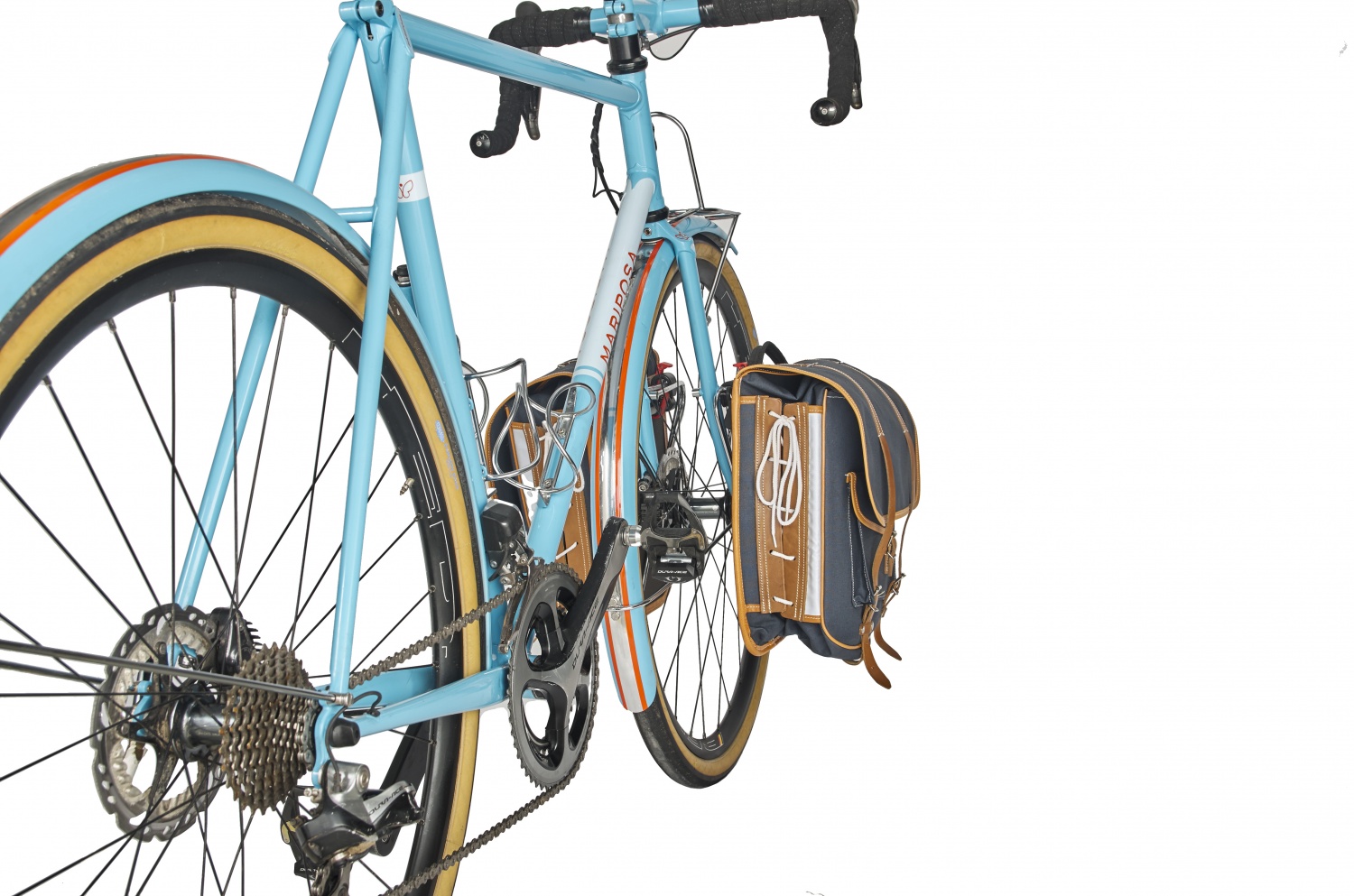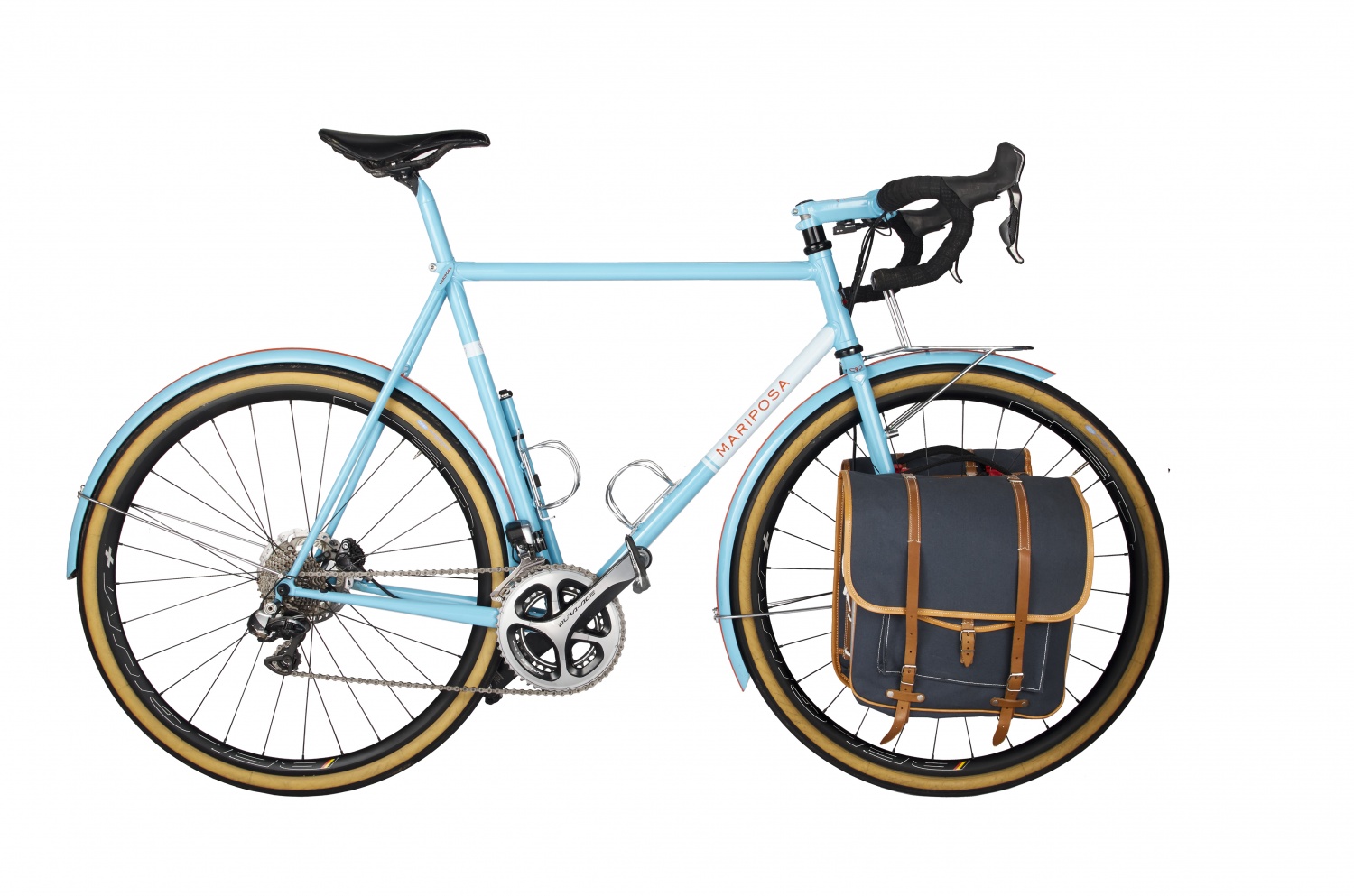Winter riding can be a great adventure, a lot of fun and a whole lot better than riding the trainer if you are well prepared, but it can be miserable if you are not.
When pairing proper clothing with a bike fitted with mudguards or fenders, there are few weather conditions that can make a ride unpleasant. Their protection keeps water from soaking the chamois, and they prevent road grit from turning Lycra into sandpaper. Gone is the spray off of the front wheel that drenches feet along the freezing plume of water off of the back wheel. And on a club ride, everybody is more comfortable without a constant wheel-spray showering their face. While riding in the rain and slush, the majority of the water comes off of the wheels. And once that spray is eliminated, a cyclist with a good rain jacket can stay quite dry for the duration of any ride.
There are few, if any, reasons not to train without these items during inclement weather. Fausto Coppi rode with them. Phil Anderson used them, and many current pros fit them during the off-season. If I were to have one bike, it would be a bike with fenders. Keeping you dryer and warmer, they allow you to ride comfortably for hours. After all, riding with a wet chamois and cold feet doesn’t toughen up a rider; it simply makes him or her miserable. By contrast, being able to ride for hours regardless of the weather, makes any cyclist stronger.
Now that I live in Toronto, where there is inclement weather much of the year, I’m surprised at how few cyclists use them. Commuters buzz around town on their fixies, hybrids, and ‘cross bikes with streaks of dirty mud up their backsides. With fenders, they could show up at work fairly dry and clean. It is puzzling that so many cyclists are resistant to mounting them on a bike that they’ll ride through the winter. Too often, fashion and style dictate how most want to look while out on the road, not comfort and function. Or, perhaps, it is simply because they don’t realize just how much protection fenders can give from the wet.
Unfortunately, the majority of carbon race bikes don’t easily accommodate fenders. Their frames are oddly shaped, and they lack eyelets and sufficient clearance. But, with some cutting, fiddling, and a few small clamps, it can often be done.
Thirty years ago, almost all steel frames came with eyelets and had the clearance around the brakes, forks, and bottom bracket to mount fenders. Having always focused on custom bicycles building, Mariposa Bicycles has always had the ability to add eyelets for fenders on our bikes and with the current trend back towards frames with clearance for larger 28 – 42 mm tires and gravel riding, mass manufacturers are starting to add eyelets to their bicycle frames and forks as well so that fenders can easily be mounted and removed.
When I raced professionally with Team Sky, they always gave the riders who live in northern cold climates cyclocross bikes that were set up in our road positions and were drilled and tapped by the mechanics so that the fenders could be cleanly mounted. Edvald Boasson Hagen rode his on days where the deep Norwegian snow, or ice cold rain, would otherwise keep him indoors.
A few companies make decent clip-on fenders. Although they do not do as good a job as a full length set of fenders, they are better than nothing, and they’ll make any ride in the wet more pleasant.
With a good mud flap at the bottom of the front mudguard the rider’s feet are kept much drier. One at the bottom of the rear mudguard makes riding in a group in the wet more pleasant, as nobody will be sprayed in the face with foul road water. While training on the west coast of Canada, where the roads rarely seem to fully dry out in the winter months, the groups I rode with insisted that every rider not only have mudguards, but also mudflaps. This keeps the last inches of uncovered wheel from spraying in the other riders’ faces. A rider without a flap was sent to the back for the duration of the ride, unable to ride at the front or socialize. Most riders made their own mudflaps with a water bottle cut in half or a piece of plastic cut from detergent jug. Some were neatly cut out and zip-tied on, while others were ragged and stuck on with duct-tape. But they all did the trick.
The right bike and proper apparel not only eliminates excuses to avoid riding in the rain, but they can even make it enjoyable. Here’s a few tips that will help you through the winter:
- Layer clothing so you can cool off when warm and to avoid getting chilled from sweat.
- Wear mitts with a Goretex outer shell, rather than gloves when it is below < 0 Celcius. If your fingers are together, they will stay warmer.
- Wear winter specific thermal shoes or tape up vents on shoes with duct tape. Wear thermal shoe covers.
- Wear a thermal cap under you helmet that protects your ears from the wind.
- Cover your neck to protect it from windchill.
- Apply Vasoline on your face to protect it from wind chill.
- Carry Hotshots in your back pocket to warm up when you fingers and/or toes get cold. Wear hotshot shoe inserts on extremely cold days.
- Use front and rear lights, as there is less daylight in the winter months.
- Install winter tires. There are loads of good options depending on the severity of the conditions. The Schwalbe Marathon Winter Plus Tires with ice spikes will give you good grip on sheet ice.
- Fenders will keep you dry and warm through the winter and allow you to ride in the worst conditions. Installing mud-flaps at the end of the fenders will keep your feet dry and reduce excess spray on your riding partners.
- Oil your chain frequently. Regular cleaning and re-application maintains the efficiency and increases the durability of the chain. Use lots of grease and oil.
- Check brake shoes and rims as they will wear quicker with winter road grit, salt and sand.
- Wash your bike post-ride and check it over frequently.
- Store the bike in a clean, dry area.
At Mariposa Bicycles, we stock a wide array of 700C and 650B fenders. We install and can custom paint them to match your bike. For inquiries, please contact us at info@mariposabicycles.ca
Photography by Walter Lai
Note: Excerpts from this article were pulled from an article written by Michael Barry in 2013 for Competitive Cyclist.

